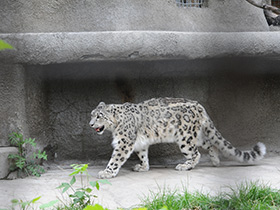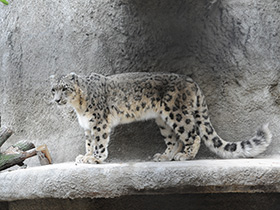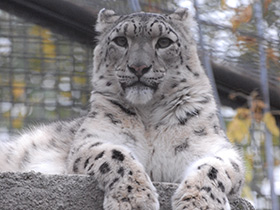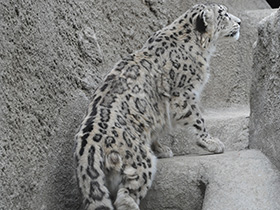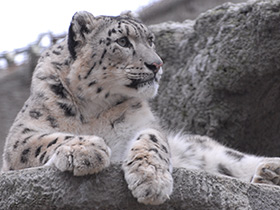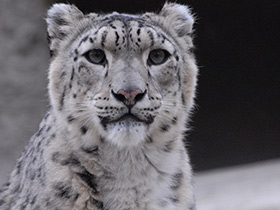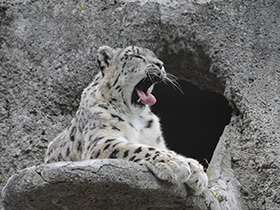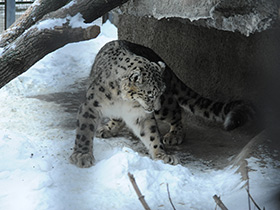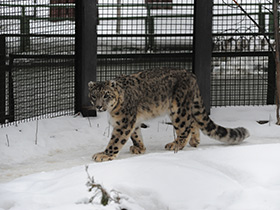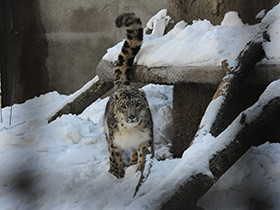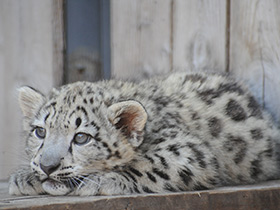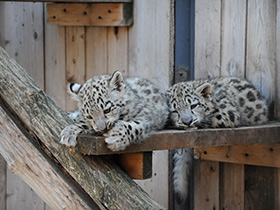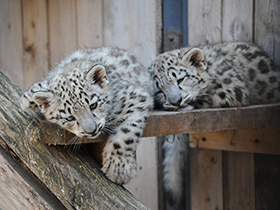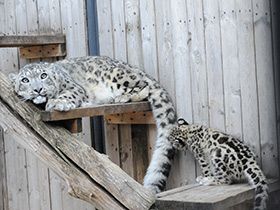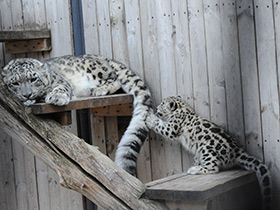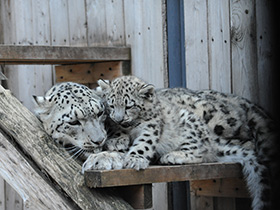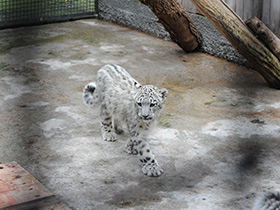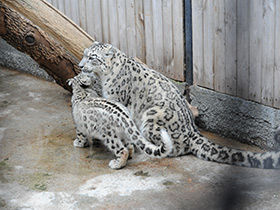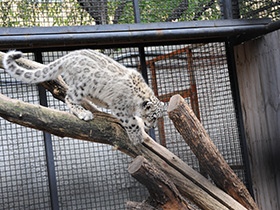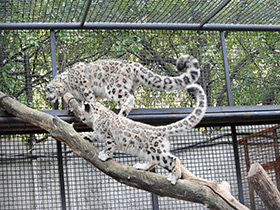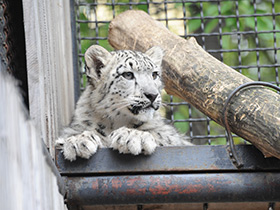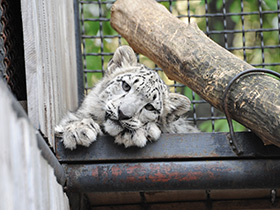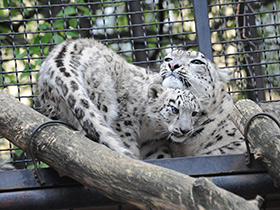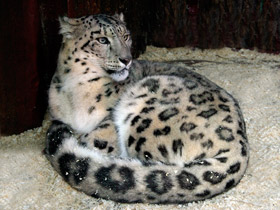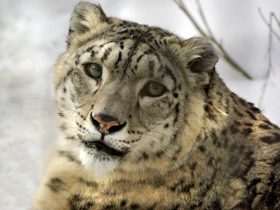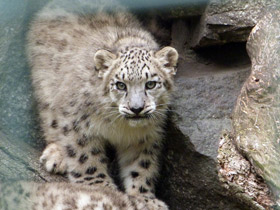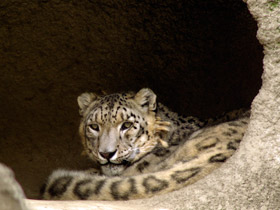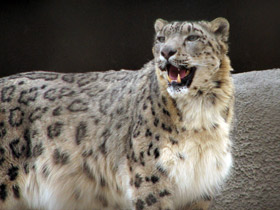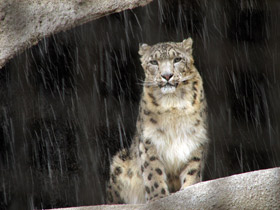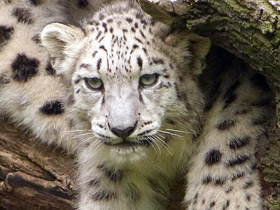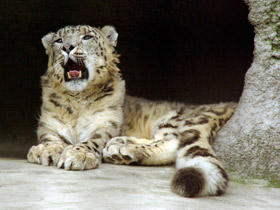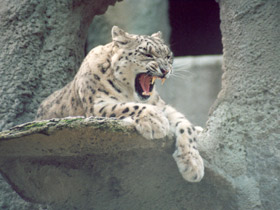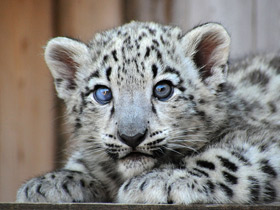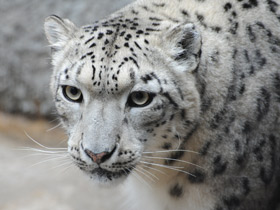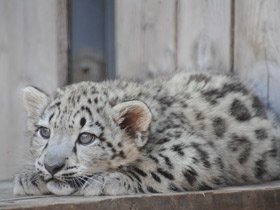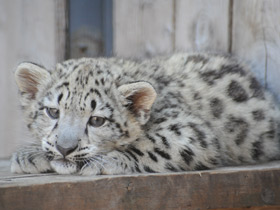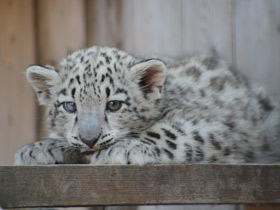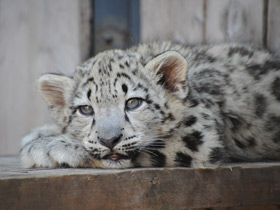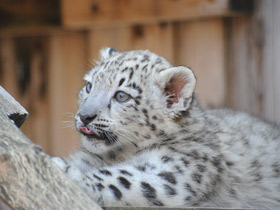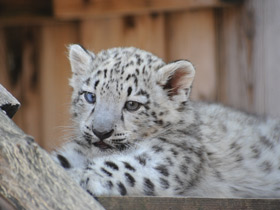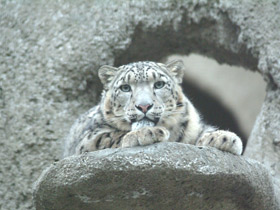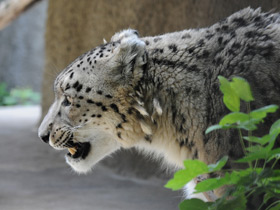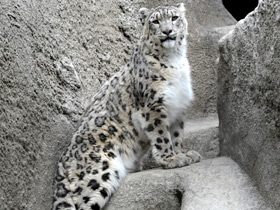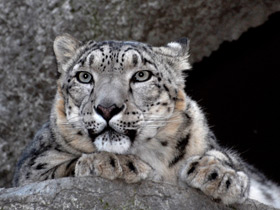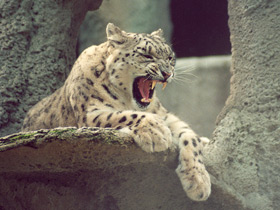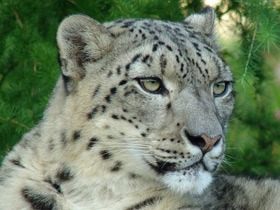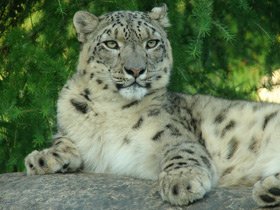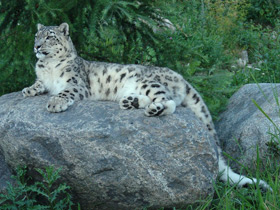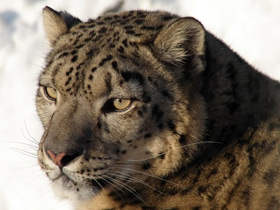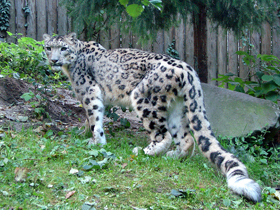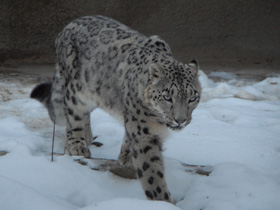Snow leopard Uncia uncia
The snow leopard is distinguished because of its long and flexible body, considerably short but wide paws, a small, round head with ears that are almost covered with fur in the winter, and large, expressive eyes (Photos 1, 2, 3, 5, 6). The snow leopard's tail is very long, exceeding three quarters of its body length, due to the fluffy fur it also seems very thick (Photo 4). It serves this elegant carnivore as a good balancer when it jumps, helping it change direction already in the middle of the jump. The snow leopard's face features sensitive vibrissae up to 10 cm long, and its flexible tongue, equipped on the sides by tubercles with keratinous epithelium is able to scrape the meat off bones (Photo 7). Its very dense and soft fur up to 55 mm long provides the snow leopard with wonderful protection from the cold. The general background of the snow leopard's winter fur is very light, almost white, with ring-shaped and solid dark spots (Photos 8, 9, 10). This coloration serves as a perfect camouflage for this animal in its natural habitat presented by dark rocks, white snow and ice. The snow leopard is the only permanent feline inhabitant of the high mountains. Due to the hard accessibility of this habitat and the low density of the species population there is still very little information about these animals. Their numbers are catastrophically low, therefore in the XX century the snow leopard was included in the IUCN Red List of Threatened Species, and the Red Data Book of Russia as threatened.
Adult snow leopards are territorial, solitary animals. They feed mostly on various ungulates, including blue sheep, markhors, argali, takins, gorals, roe deer, musk deer and wild boars. The snow leopard is a dangerous carnivore capable of killing the prey exceeding it three times in weight. However, occasionally it won't refuse gofers, pikas, pheasants and chukars. The snow leopards hunt alone, hiding in the shelters and stalking their prey (by watching out for the prey near the paths, saline soils, watering places or hiding on the rocks). When there are a few dozen meters left to the prey, the snow leopard jumps out of the shelter and reaches it by huge 6 to 7 meter leaps.
Snow leopard females usually give birth once in two years. The gestation lasts approximately 90 to 110 days, after which two to five cubs weighing about 500 grams are born. They are blind and helpless and start seeing when they are 6 to 8 days old. The mother nurses her cubs on her milk for three or four months, but already at the age of 1.5 to 2 months she starts giving them additional meat. Remains of bones, snatches of fur, bird feathers can usually be seen near the snow leopard dens. At four or five months of age the cubs leave the den and wander around the area together with their mother. At this time they reach about half the size of the female and hunt together with her all winter and part of the summer, and sometimes till the autumn. Young leopards become independent only by the second winter.
Photo 24-26: Two months old snow leopard cubs
Photo 11-16: 2.5 months old snow leopard cubs are scraping meat off the bones
Photo 17-23: The young snow leopards are 5 months old

















